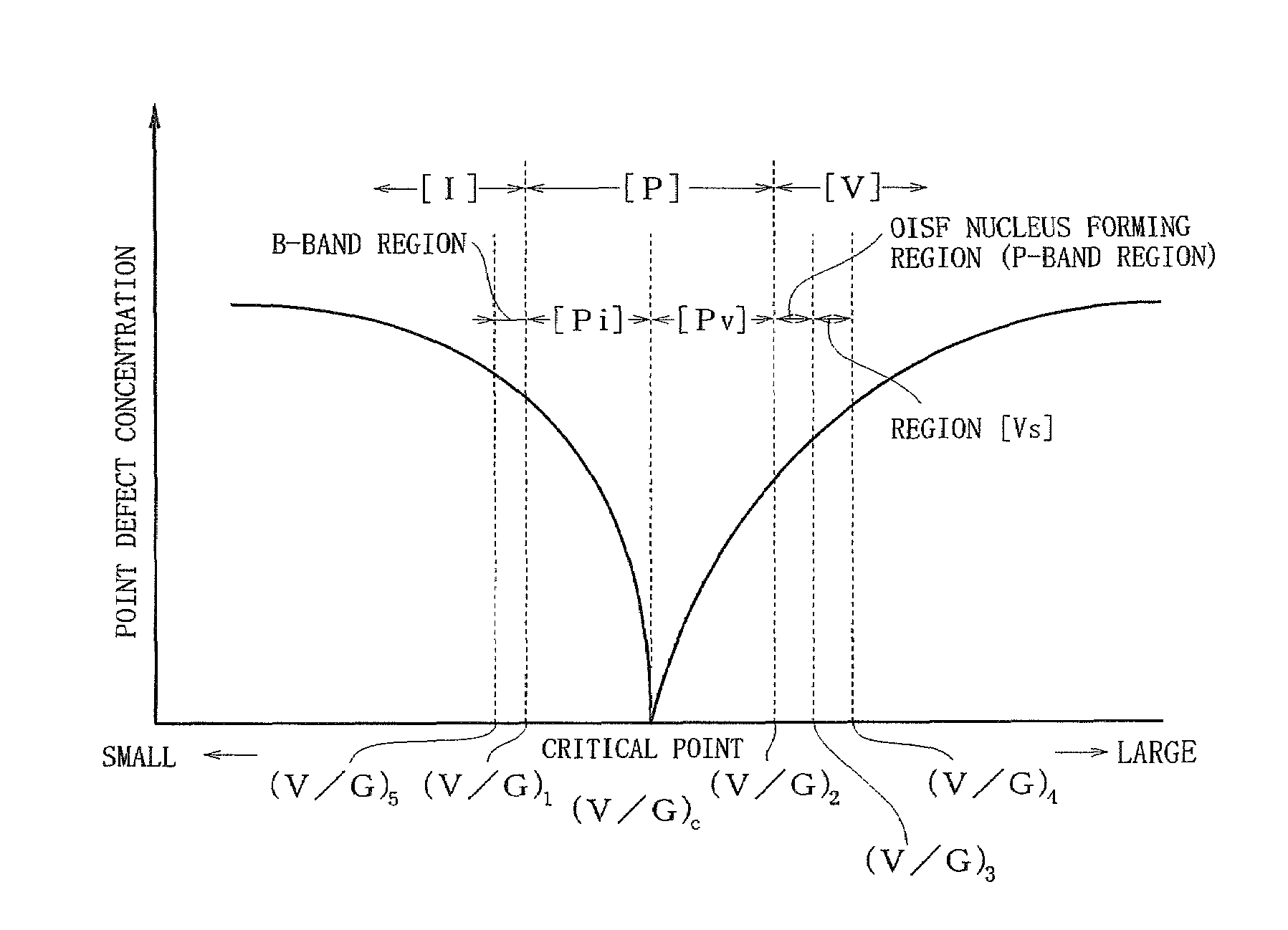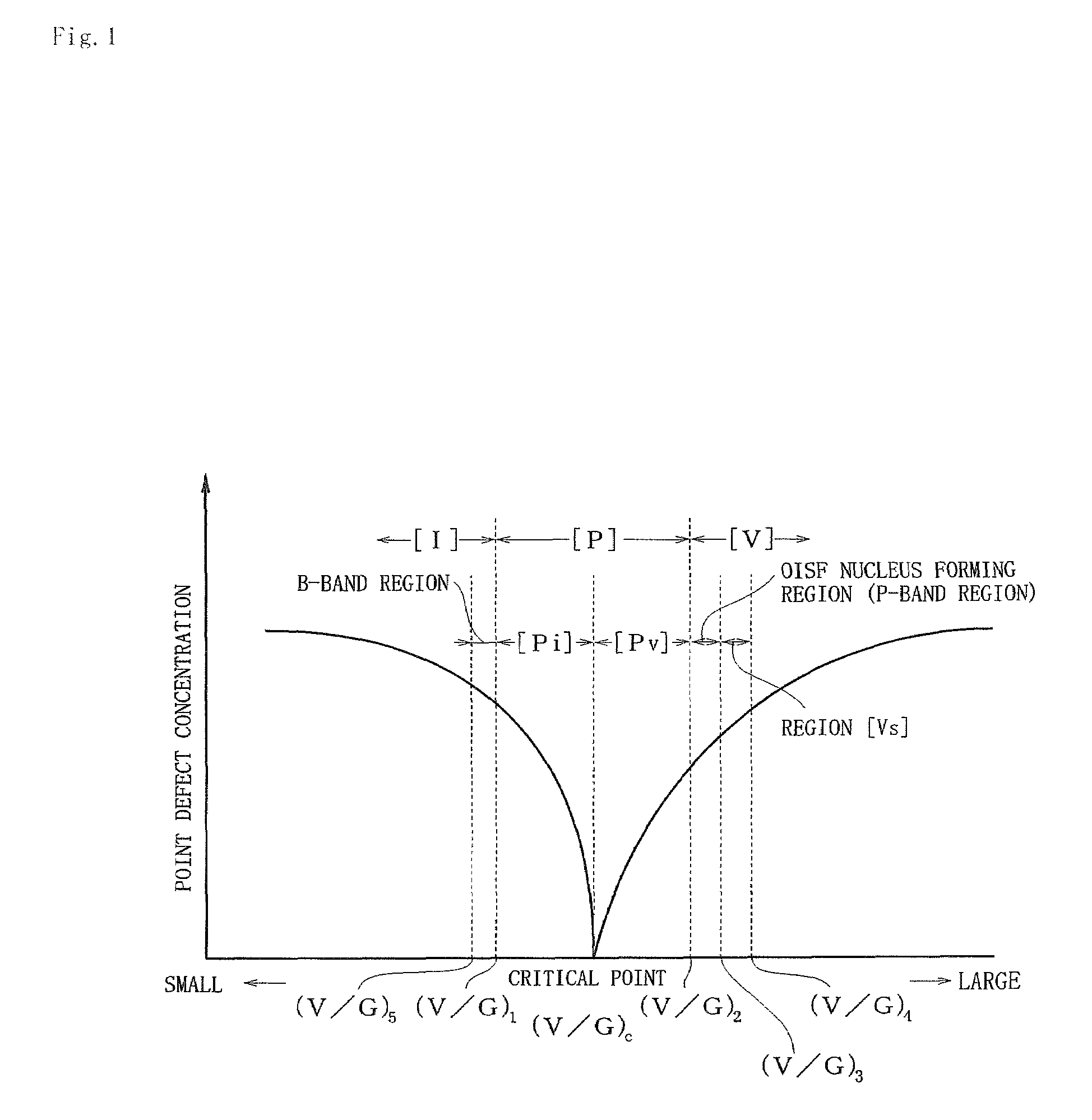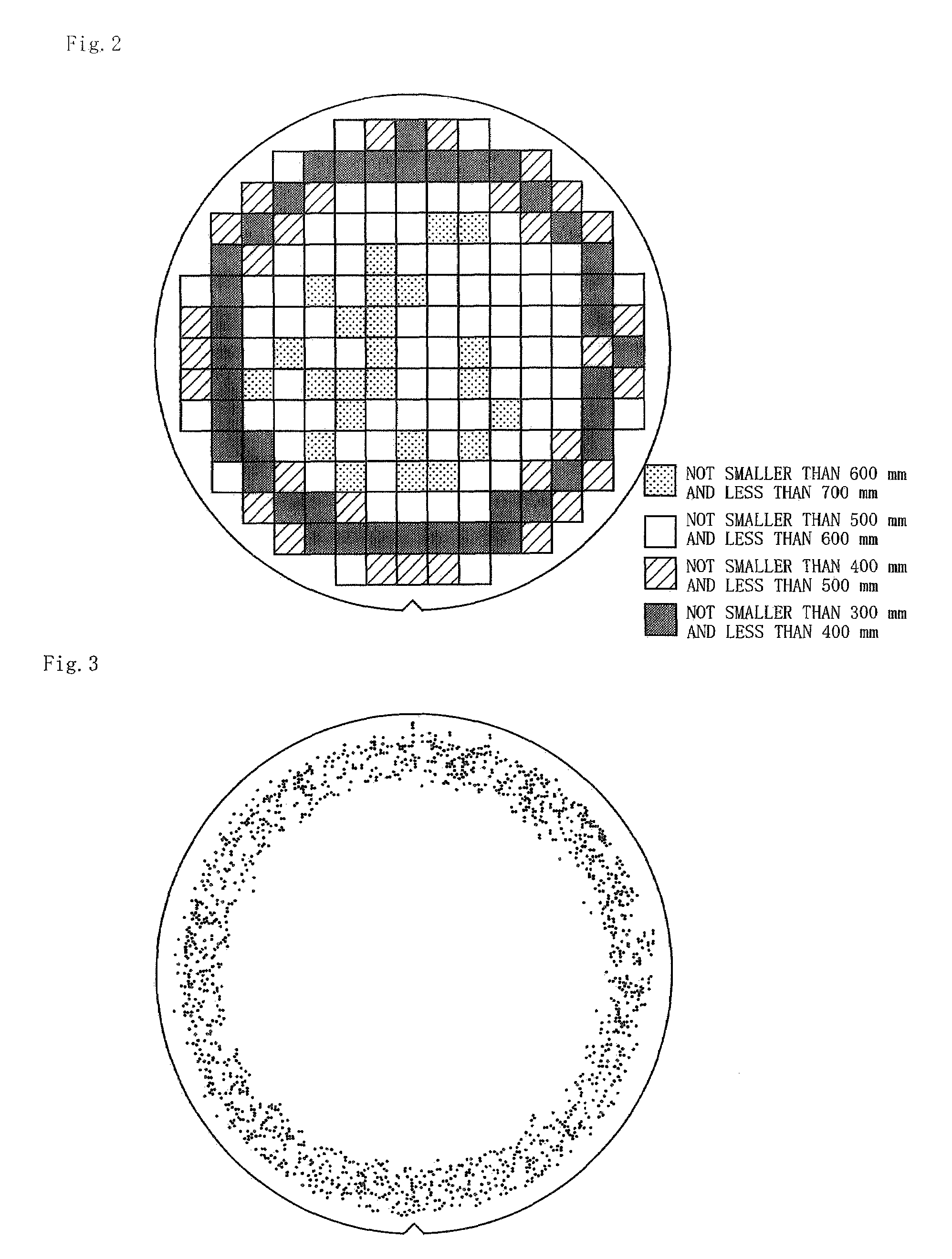Silicon wafer surface defect evaluation method
a technology of silicon wafers and defects, applied in the direction of semiconductor/solid-state device testing/measurement, instruments, under protective fluids, etc., can solve the problems of increased leak current of devices, poor evaluation throughput, high cost, etc., and achieve the effect of detecting quickly a region
- Summary
- Abstract
- Description
- Claims
- Application Information
AI Technical Summary
Benefits of technology
Problems solved by technology
Method used
Image
Examples
example 1
[0057]First, as shown in FIG. 1, a p-type silicon single-crystal ingot was pulled up, the ingot having a V / G ratio including a range of (V / G)1 to a critical point (V / G)c and a range of the critical point (V / G)c to (V / G)2, being controlled in such a manner that the V / C ratio consists of these ranges alone, and having a body portion with a diameter of 300 mm. This ingot was subjected to block cutting, external diameter grinding and orientation notch machining, and then it was sliced with a predetermined thickness, thereby a p-type silicon wafer having a diameter of 300 mm being cut out. A surface of this wafer was machine-polished to increase the parallelism, and thus an evaluation target wafer was provided.
[0058]Then, as a rapid heat treatment step, the wafer was put into a heat treatment furnace having an atmosphere which can nitride silicon by introducing a mixed gas containing an NH3 gas and an Ar gas at a ratio of 20:80, a heat treatment was performed at a temperature elevating s...
example 2
[0059]Surface defects on a wafer surface were detected like Example 1 except that a wafer cut out from a lot different from that of the wafer used in Example 1 was utilized as a measurement sample. That is, the wafer as an evaluation target in Example 2 is a wafer cut out from an ingot pulled up in a lot different from that of the ingot pulled up in Example 1. As shown in FIG. 1, like the ingot pulled up in Example 1, the ingot is a p-type silicon single-crystal ingot having a body portion with a diameter of 300 mm controlled in such a manner that a V / G ratio includes a range of (V / G)1 to a critical point (V / G)c and a range of the critical point (V / G)c to (V / G)2 and is composed of these ranges alone as pull-up conditions.
example 3
[0060]Surface defects on a wafer surface were detected like Example 1 except that a wafer cut out from a lot different from that of the wafers used in Examples 1 and 2 was utilized as a measurement sample. That is, the wafer as an evaluation target in this Example 3 is a wafer cut out from an ingot pulled up in a lot different from that of the ingots pulled up in Examples 1 and 2. Like the ingots pulled up in Examples 1 and 2, as shown in FIG. 1, the ingot is a p-type silicon single-crystal ingot having a body portion with a diameter of 300 mm controlled in such a manner that a V / G ratio includes a range of (V / G)1 to a critical point (V / G)c and a range of the critical point (V / G)c to (V / G)2 and is composed of these ranges alone as pull-up conditions of the ingot
PUM
| Property | Measurement | Unit |
|---|---|---|
| melting point | aaaaa | aaaaa |
| diffusion length | aaaaa | aaaaa |
| temperature | aaaaa | aaaaa |
Abstract
Description
Claims
Application Information
 Login to View More
Login to View More - R&D
- Intellectual Property
- Life Sciences
- Materials
- Tech Scout
- Unparalleled Data Quality
- Higher Quality Content
- 60% Fewer Hallucinations
Browse by: Latest US Patents, China's latest patents, Technical Efficacy Thesaurus, Application Domain, Technology Topic, Popular Technical Reports.
© 2025 PatSnap. All rights reserved.Legal|Privacy policy|Modern Slavery Act Transparency Statement|Sitemap|About US| Contact US: help@patsnap.com



